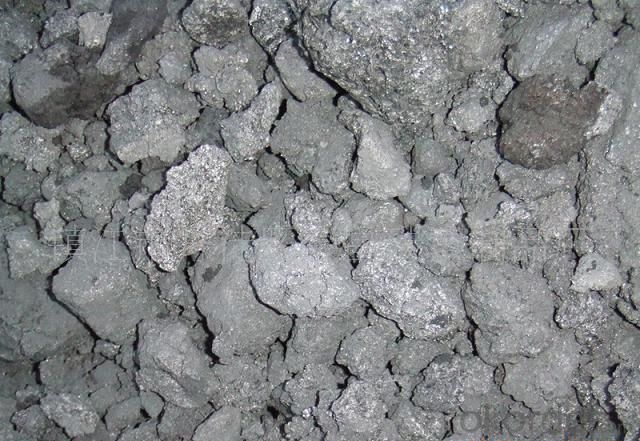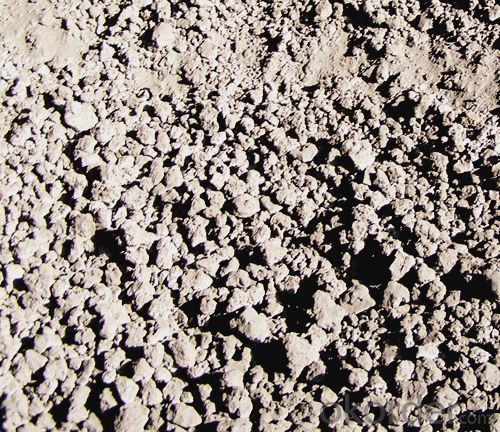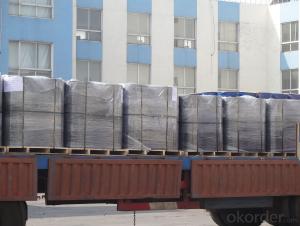Shortest Shipping Time Calcined Petroleum Coke
- Loading Port:
- Tianjin
- Payment Terms:
- TT OR LC
- Min Order Qty:
- 11 m.t.
- Supply Capability:
- 10000000 m.t./month
OKorder Service Pledge
OKorder Financial Service
You Might Also Like
1.Structure of Calcined Petroleum Coke Description
Calcined Petroleum Coke is made from raw petroleum coke,which is calcined in furnace at a high temperature(1200-1300℃).CPC/Calcined Petroleum Coke is widely used in steelmaking,castings manufacture and other metallurgical industry as a kind of recarburizer because of its high fixed carbon content,low sulfur content and high absorb rate.Besides,it is also a best kind of raw materials for producing artifical graphite(GPC/Graphitized Petroleum Coke) under the graphitizing temperature(2800℃).
2.Main Features of the Calcined Petroleum Coke
High-purity graphitized petroleum coke is made from high quality petroleum coke under a temperature of 2,500-3,500°C. As a high-purity carbon material, it has characteristics of high fixed carbon content, low sulfur, low ash, low porosity etc.It can be used as carbon raiser (Recarburizer) to produce high quality steel,cast iron and alloy.It can also be used in plastic and rubber as an additive.
3. Calcined Petroleum Coke Images


4. Calcined Petroleum Coke Specification
| Place of Origin: | Ningxia, China (Mainland) | Brand Name: | CNBM | Model Number: | 1-5MM 1-4MM 2-5MM 0-10MM |
| Application: | as carbon raiser in steel and casting factory | Dimensions: | F.C:90-96%MIN S:0.18-0.3%MAX | Chemical Composition: | F.C S ASH V.M MOISTURE |
| color: | black |
5.FAQ of Calcined Petroleum Coke
1). Q: Are you a factory or trading company?
A: We are a factory.
2). Q: Where is your factory located? How can I visit there?
A: Our factory is located in ShanXi, HeNan, China. You are warmly welcomed to visit us!
3). Q: How can I get some samples?
A: Please connect me for samples
4). Q: Can the price be cheaper?
A: Of course, you will be offered a good discount for big amount.
- Q:Are carbon cells the same as alkaline batteries?
- Unlike, alkaline batteries are 4-5 times the capacity of carbon batteries, and the price is 1.5-2 times that of carbon.Carbon battery full name: neutral zinc manganese dioxide dry cell (zinc-manganese dry battery), belonging to the chemical source of the original battery, is a one-time battery. Because the chemical power unit has an electrolyte that is a non flowing paste, it is also called a dry cell, as opposed to a battery with a flowing electrolyte.
- Q:What is the importance of carbon dating in archaeology?
- Carbon dating is crucial in archaeology as it allows us to determine the age of artifacts and remains with remarkable accuracy. By analyzing the levels of carbon-14 isotopes in organic materials, we can establish when they were last alive or in use. This information provides valuable insights into the chronology of human history, enabling archaeologists to reconstruct past civilizations, understand cultural changes, and refine our understanding of the past.
- Q:How accurate is carbon dating?
- The scientific method known as carbon dating, or radiocarbon dating, is widely used to determine the age of organic materials that are up to 50,000 years old. It relies on measuring the ratio of radioactive carbon-14 (C-14) to stable carbon-12 (C-12) in a sample. Carbon dating has proven to be highly accurate, with a small margin of error. Its accuracy depends on factors such as the quality and preservation of the sample, the precision of measurement instruments, and understanding the carbon cycle in the past. However, carbon dating has limitations. It can only be used on organic materials that were once alive, so it is not applicable to dating inorganic materials like rocks or minerals. It is most effective for samples younger than 50,000 years old because the amount of C-14 decreases over time, making accurate measurement more challenging. To ensure accuracy, scientists often use multiple dating methods or cross-reference results with other independent techniques. This helps to verify the reliability of carbon dating and gain a more comprehensive understanding of the sample's age. Advancements in technology and calibration methods have improved the accuracy of carbon dating. For example, Accelerator Mass Spectrometry (AMS) allows for smaller sample sizes and greater measurement precision, reducing the margin of error. Calibration curves based on tree rings, or dendrochronology, also refine the accuracy of carbon dating. While carbon dating is highly reliable, it is important to recognize that no dating technique is perfect. All scientific dating methods have inherent limitations and uncertainties. However, with proper calibration and careful analysis, carbon dating remains one of the most accurate ways to determine the age of organic materials.
- Q:What are the consequences of increased carbon emissions on global food security?
- Increased carbon emissions have significant consequences on global food security. Firstly, rising carbon dioxide levels can lead to changes in temperature and precipitation patterns, affecting crop productivity and water availability. This can result in reduced yields, crop failures, and increased vulnerability to pests and diseases, ultimately impacting food production and availability. Furthermore, carbon emissions contribute to climate change, which exacerbates extreme weather events like droughts, floods, and heatwaves. These events can destroy crops, disrupt supply chains, and increase food prices, making it difficult for vulnerable populations to access nutritious food. Additionally, climate change may lead to the loss of arable land due to desertification, sea-level rise, or other environmental changes, further diminishing food production capacity. Moreover, carbon emissions contribute to ocean acidification, which harms marine ecosystems and disrupts the food chain. This can negatively impact fish stocks and other seafood sources, affecting the livelihoods of coastal communities who rely on fishing as a primary source of food and income. Overall, increased carbon emissions have severe consequences for global food security, threatening the stability and accessibility of food supplies both on land and in the oceans. Addressing carbon emissions and adopting sustainable practices are essential in safeguarding our food systems and ensuring the wellbeing of future generations.
- Q:How does carbon impact the prevalence of tropical storms?
- The prevalence of tropical storms is greatly influenced by carbon, specifically carbon dioxide (CO2) emissions. Human activities like burning fossil fuels, deforestation, and industrial processes have led to an increase in atmospheric CO2 levels, resulting in global warming. This phenomenon of rising global temperatures has various implications for the formation and intensity of tropical storms. To begin with, warmer temperatures lead to higher levels of moisture in the atmosphere due to increased evaporation of seawater. Moisture is crucial for the development and sustenance of tropical storms as it provides the necessary fuel. With more moisture available, the potential for tropical storms to form and strengthen is enhanced. Moreover, rising global temperatures cause tropical oceans to expand, providing a larger area for tropical storms to form and intensify. This expansion allows for greater energy exchange between the ocean and the atmosphere, further enhancing the potential for storm development. Additionally, elevated levels of CO2 contribute to ocean acidification, which negatively affects marine ecosystems like coral reefs. Coral reefs act as natural barriers that protect coastal areas from storm surges and waves generated by tropical storms. However, the acidification of oceans weakens and destroys these reefs, leaving coastal regions more vulnerable to storm impacts. Lastly, carbon emissions causing climate change alter atmospheric and oceanic circulation patterns, which can affect the movement and tracks of tropical storms. Changes in wind patterns and ocean currents may cause storms to deviate from their usual paths, leading to increased uncertainty and potential impacts on regions not typically prone to these events. In summary, carbon emissions and the resulting global warming have significant effects on the prevalence of tropical storms. Increased moisture content, expanded warm ocean areas, weakened coastal defenses, and altered storm tracks are all consequences of rising carbon levels, ultimately contributing to more frequent and intense tropical storms.
- Q:What are the consequences of increased carbon emissions on coastal regions?
- Increased carbon emissions have significant consequences on coastal regions. One of the most alarming consequences is the rise in sea levels. As carbon dioxide and other greenhouse gases trap heat in the atmosphere, they contribute to the warming of the planet. This leads to the melting of glaciers and polar ice caps, causing sea levels to rise. Higher sea levels pose a threat to coastal regions as they can result in increased flooding, erosion, and the loss of coastal ecosystems. In addition to rising sea levels, increased carbon emissions also contribute to ocean acidification. When carbon dioxide is absorbed by seawater, it forms carbonic acid, which lowers the pH of the ocean. This decrease in pH has detrimental effects on marine life, particularly on coral reefs and shellfish. Acidic waters make it difficult for coral reefs to build their calcium carbonate structures, leading to their bleaching and eventual death. Similarly, shellfish such as oysters, clams, and mussels struggle to develop their shells in more acidic waters, impacting their survival and the entire coastal food chain. Furthermore, higher levels of carbon emissions contribute to the intensification of storms and extreme weather events. Rising temperatures in coastal regions can lead to more frequent and severe hurricanes, cyclones, and storm surges. These events can cause extensive damage to coastal infrastructure, including homes, businesses, and critical infrastructure like roads and power lines. The increased frequency of storms also puts coastal communities at a higher risk of displacement and loss of livelihoods. Finally, increased carbon emissions contribute to global warming, which in turn leads to higher air temperatures. The warming of coastal regions can have adverse effects on the overall ecosystem. For instance, warmer waters can lead to the migration or extinction of certain species, disrupting the delicate balance of coastal ecosystems. It can also impact the health and productivity of fisheries, affecting the livelihood of communities reliant on fishing. In conclusion, increased carbon emissions have far-reaching consequences on coastal regions. Rising sea levels, ocean acidification, intensified storms, and the overall warming of coastal ecosystems pose significant threats to the environment, economies, and communities in these areas. It is crucial to reduce carbon emissions and take proactive measures to mitigate these consequences and protect our coastal regions for future generations.
- Q:Can carbon in barbecue cause cancer? Can carbonated food cause cancer?
- At the same time, there is another carcinogen in the barbecue food - nitrosamines.Why not eat barbecue food, mainly because of its high fat content, not health, but also not easy to digest, in addition, because the stall in the barbecue grill to add spices and other things, therefore, the body fat intake will cause degeneration in vivo, which leads to the occurrence of cancer.
- Q:Often see the so-called 30T, 46T, 60T carbon fiber, 60T carbon fiber, equivalent to T hundreds of carbon fibers, is T800, or T1000? I'm not very good at parameter conversion. Is there a parameter list? How do I correspond to the T300T700T800 performance parameter table?
- One, 60T carbon fiber and T hundreds of carbon fiber does not have any corresponding, 60T belongs to M series (high modulus carbon fiber). Only 30T corresponds to T800.
- Q:What are the consequences of increased carbon emissions on coral reefs?
- Increased carbon emissions have severe consequences on coral reefs. One of the major impacts is ocean acidification, which occurs when excess carbon dioxide is absorbed by seawater, leading to a decrease in pH levels. This acidification inhibits the ability of corals to build their calcium carbonate skeletons, making them more vulnerable to erosion and breaking. Additionally, higher levels of carbon dioxide in the atmosphere contribute to global warming, resulting in rising ocean temperatures. This leads to coral bleaching, a phenomenon in which corals expel the symbiotic algae that give them their vibrant colors. Without these algae, corals become stressed, lose their color, and are more susceptible to disease and death. Furthermore, increased carbon emissions contribute to changes in ocean currents and weather patterns, leading to more frequent and intense storms. These storms can physically damage coral reefs, causing further destruction to already vulnerable ecosystems. The consequences of increased carbon emissions on coral reefs are far-reaching and devastating. The decline of coral reefs not only affects the biodiversity of the oceans but also has significant implications for human populations that depend on reefs for food, income, coastal protection, and tourism. It is crucial to reduce carbon emissions and take immediate action to protect and preserve these invaluable ecosystems.
- Q:How does carbon affect the formation of cyclones?
- The formation of cyclones is not directly influenced by carbon. Cyclones, also called hurricanes or typhoons, are created through a complex interaction of various factors in the atmosphere and oceans. Carbon, particularly carbon dioxide (CO2), is a greenhouse gas that contributes to global warming and climate change. It is important to emphasize that carbon dioxide concentrations in the atmosphere are increasing due to human activities, such as the burning of fossil fuels. However, this does not directly cause cyclones to form. Nevertheless, climate change resulting from higher levels of carbon dioxide does have an indirect impact on cyclone formation. Climate change leads to warmer temperatures, which in turn increase sea surface temperatures. These elevated temperatures provide the necessary energy for cyclones to form and strengthen. Additionally, higher temperatures cause increased evaporation rates, resulting in more moisture in the atmosphere. This moisture serves as fuel for cyclone development. Furthermore, climate change can modify atmospheric conditions and patterns of circulation. These changes may influence the frequency, intensity, and paths of cyclones. However, the specific effect of carbon dioxide on cyclone formation and behavior remains an active area of research. More studies are required to fully comprehend the relationship between carbon dioxide and cyclones.
1. Manufacturer Overview |
|
|---|---|
| Location | |
| Year Established | |
| Annual Output Value | |
| Main Markets | |
| Company Certifications | |
2. Manufacturer Certificates |
|
|---|---|
| a) Certification Name | |
| Range | |
| Reference | |
| Validity Period | |
3. Manufacturer Capability |
|
|---|---|
| a)Trade Capacity | |
| Nearest Port | |
| Export Percentage | |
| No.of Employees in Trade Department | |
| Language Spoken: | |
| b)Factory Information | |
| Factory Size: | |
| No. of Production Lines | |
| Contract Manufacturing | |
| Product Price Range | |
Send your message to us
Shortest Shipping Time Calcined Petroleum Coke
- Loading Port:
- Tianjin
- Payment Terms:
- TT OR LC
- Min Order Qty:
- 11 m.t.
- Supply Capability:
- 10000000 m.t./month
OKorder Service Pledge
OKorder Financial Service
Similar products
New products
Hot products
Related keywords





























